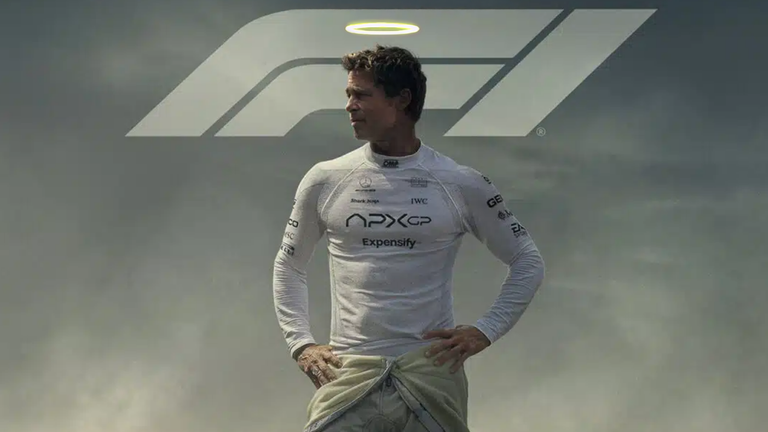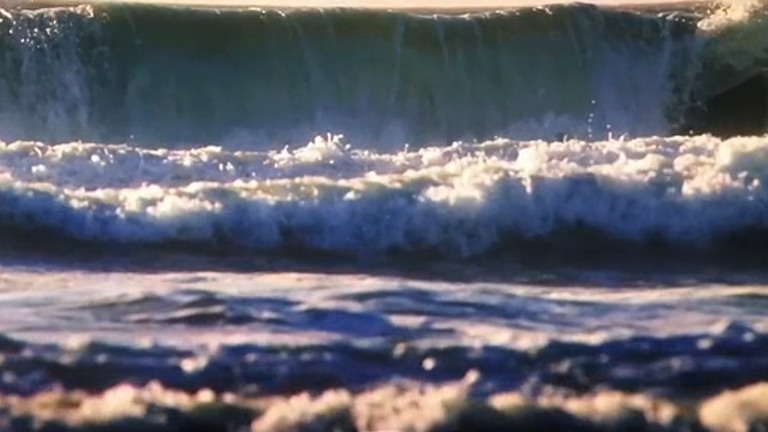F1: THE MOVIE – KOLINSKI'S LIMINAL CINEMA. FROM MAVERICK TO F1

Top Gun: Maverick as Allegory, and F1: The Movie as a Spiritual Parallel
At first glance, F1: The Movie appears to be a straightforward story. But when you look at the ‘starting grid’, director Joseph Kosinski, co-writer Ehren Kruger, cinematographer Claudio Miranda, and producer Jerry Bruckheimer, all fresh off Top Gun: Maverick, it signals that the story might carry a deeper layer.
In Top Gun: Maverick, Kosinski and Kruger subtly hint at the death of a Hollywood hero archetype, embodied by Tom Cruise. In the opening scene, Maverick flies a futuristic SR-72 bomber past Mach 10, then the jet explodes. The next moment, he walks into a bar, unscathed. The film then unfolds as a nostalgic, high-octane flick, echoing the impossible mission trope of Star Wars’ 1977 Death Star assault.
What Kosinski is doing is clever: he gives the audience (and the producers) exactly what they want, while quietly suggesting that the real Maverick is already dead. It's a cinematic sleight of hand, a showy spectacle layered over symbolic death.
Ocean, Crash, Rebirth: The Death of Another Archetype
F1: The Movie opens with an underwater shot of ocean waves crashing, a seagull gliding across a sunset, and finally, an onboard crash scene. The next shot is of Brad Pitt’s character, Sonny Hayes, waking up.
From that moment on, the film follows a rhythm similar to Maverick, but in the world of Formula One. This time, however, the metaphorical death is of a different kind: the death of the classic F1 driver archetype.
This archetype, seen in characters like James Hunt from Rush (2013), was defined by arrogance, raw talent, and defiance. A man with an ego the size of a small planet. The kind of man who’d say, “Sex. Breakfast of champions.” Formula 1 then was a sport for those with balls of steel, big cars, roaring engines, and the real threat of death at every corner.
Sonny Hayes is a ghost of that past. He is completely out of place and out of time.A Purgatorial Redemption ArcAs a longtime fan of the sport, it’s clear: no one could survive a crash like Sonny’s. And yet, there are no discussions or flashbacks about his recovery, just a scar on his back, some blurry vision shots, and subtle nods to his mortality. This mirrors Maverick’s opening: a character walks away from a seemingly fatal crash without a scratch.
What Kosinski, Kruger, and Miranda are portraying is a liminal journey, a story set between life and death.
The ocean imagery, the silence, the symbolism of crashing and reawakening, these are cinematic indexes of Sonny’s purgatorial state. What follows is not a simple comeback. It’s a purgatory dream: his final lap through life’s unfinished business.
The racetrack becomes a spiritual proving ground, and the young team he mentors serves as reflection of his former self, his choices, his regrets. His desire to win again is no longer about ego or fame. It’s a symbolic quest for transcendence, and redemption with youth, failures, and even mortality.
The Beach: Where It All Ends—and Begins
In the final act, Sonny is shown at the beach, looking for a seat to race in the Baja. In previous scenes, when asked about his price, he always responds: “It’s not about the money.” When asked again, “Then what is it about?” , he simply laughs.
This is not a laugh of dismissal. It’s the kind of laughter that speaks of something the living would not understand, something internal and spiritual rather than material. The Jungian 'within' and 'without'.
The credits roll over shots of Sonny driving freely along the beach, waves crashing at his side. It mirrors the film’s opening. The cycle is complete. The beach, as many mythological traditions (i.e, Polynesian), symbolizes the threshold between worlds.
This marks the end of Sonny Hayes’ purgatory arc, and the transcendence of a dying Formula 1 archetype—and perhaps, the sport itself.
The Death of the Sport
As Fernando Alonso once said in 2006: “I don’t consider F1 anymore a sport.” The sentiment echoes loudly in this film. Jeremy Clarkson also once stirred controversy with: “If safety is this important in F1, it’s probably best not to race at all.”The scene where Sonny perpetrated crashes just for his teammate, Joshua Pearce to climb the race position is a borderline parody and a silent critique of the state of the sports. Similar to how Kolinski did in Maverick with the impossible mission trope of Star Wars’ 1977 Death Star assault. To serve the Scorsese's 'theme park' spectacle to the major audience.
Over the years, Formula 1 has “fixed” things that weren’t broken: New logos, New theme songs A restructured points system, Assisted overtaking (DRS), a corporate gloss over raw competition. All signs of a rampant capitalist takeover, where entertainment value replaces essence. The same critique, arguably, could be applied to today's Hollywood.
F1: The Movie plays like a lucid dream for the modern viewer. On the surface, it delivers the thrills and tropes we expect from a sports comeback film. But underneath, it’s something far more reflective: a symbolic farewell to a lost identity—both of the driver, and the sport.

Wow! I haven't seen the F1 movie, but after reading this in-depth analysis, I swear I really want to see it. I find the connection you make with Top Gun: Maverick fascinating. That idea that it's a kind of purgatory for the character and a critique of the industry itself (whether Hollywood or F1) is brilliant. It would never have occurred to me.
thank you!
muy buena reseña!
very good review!
thank you!